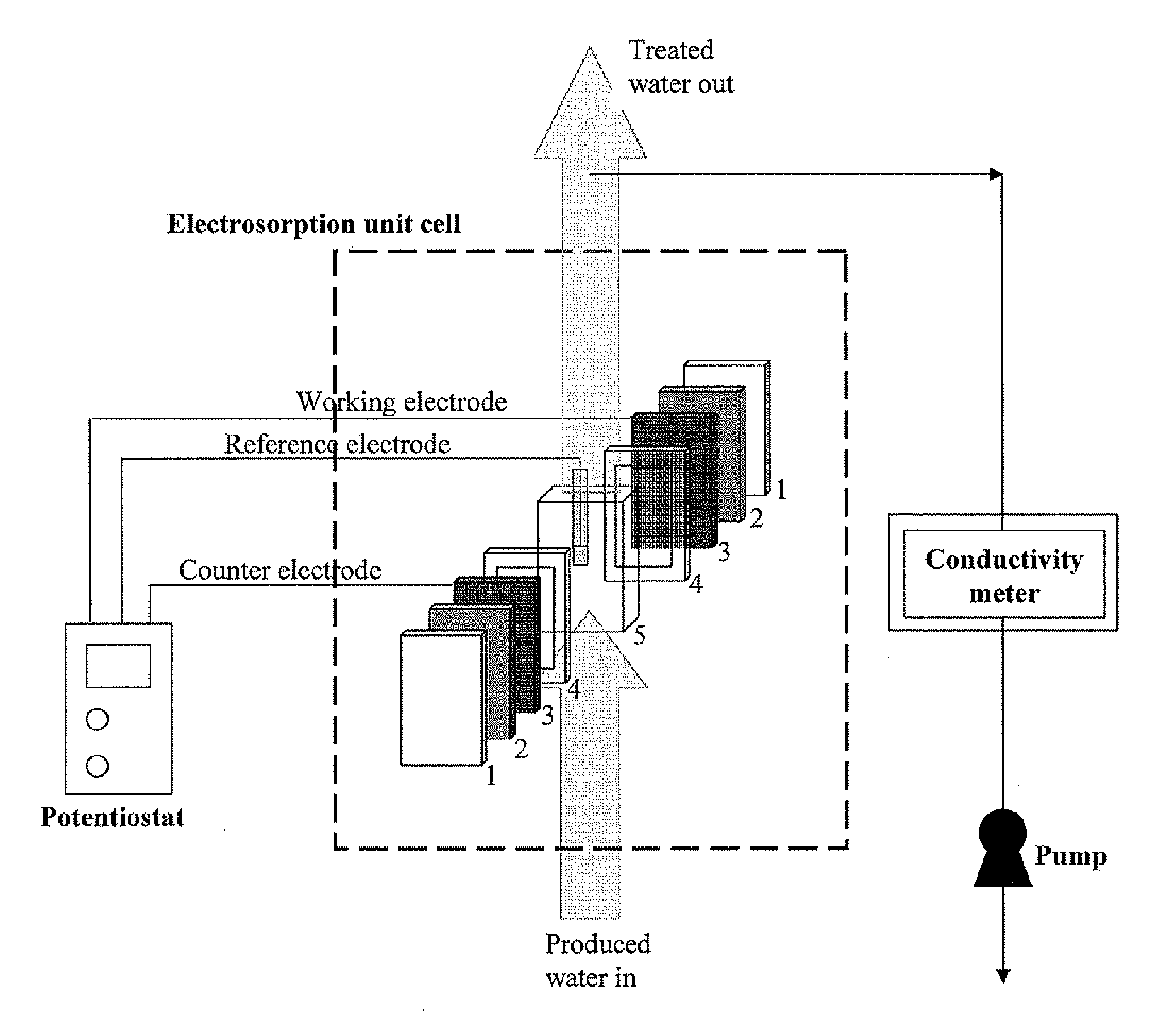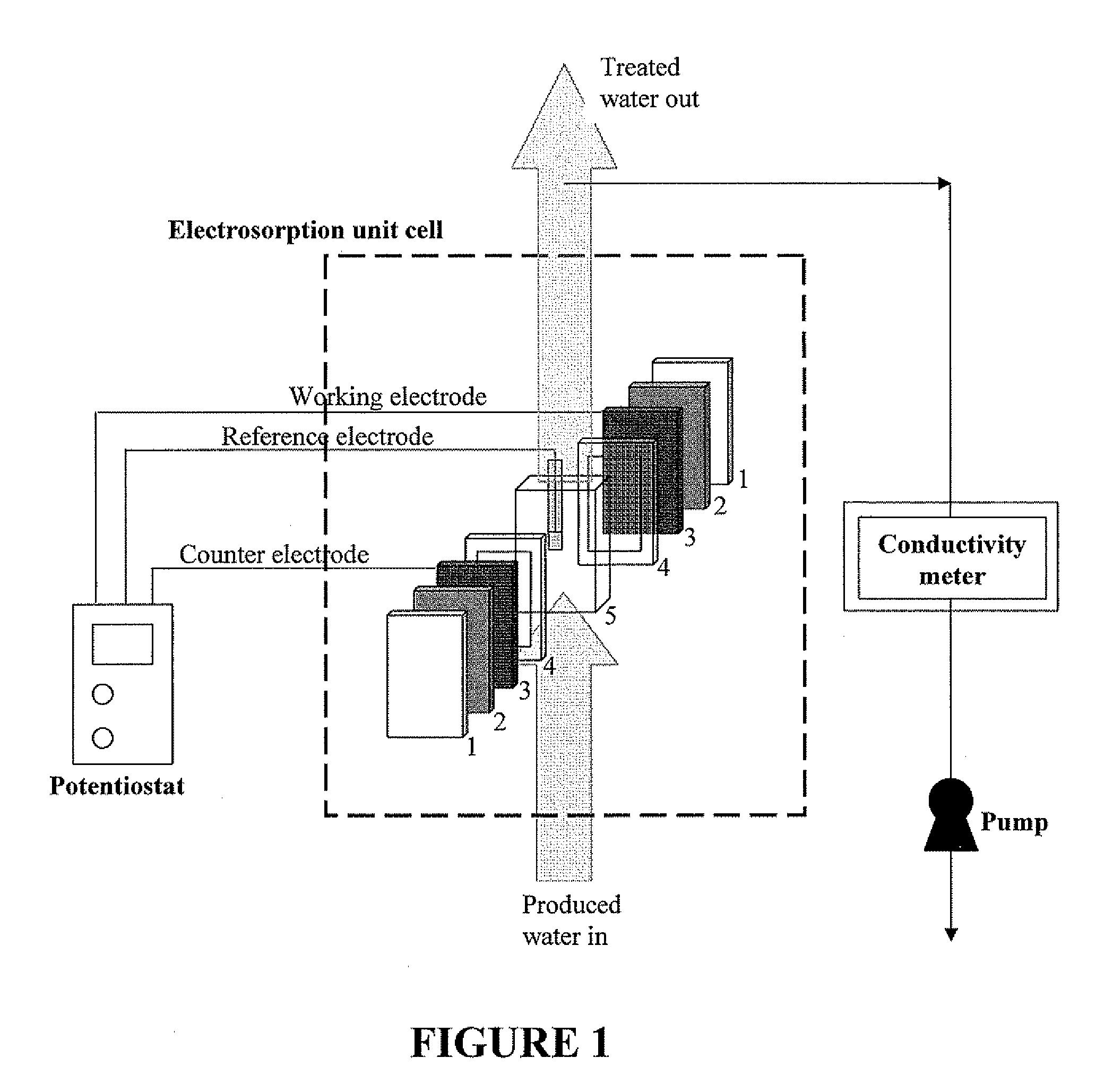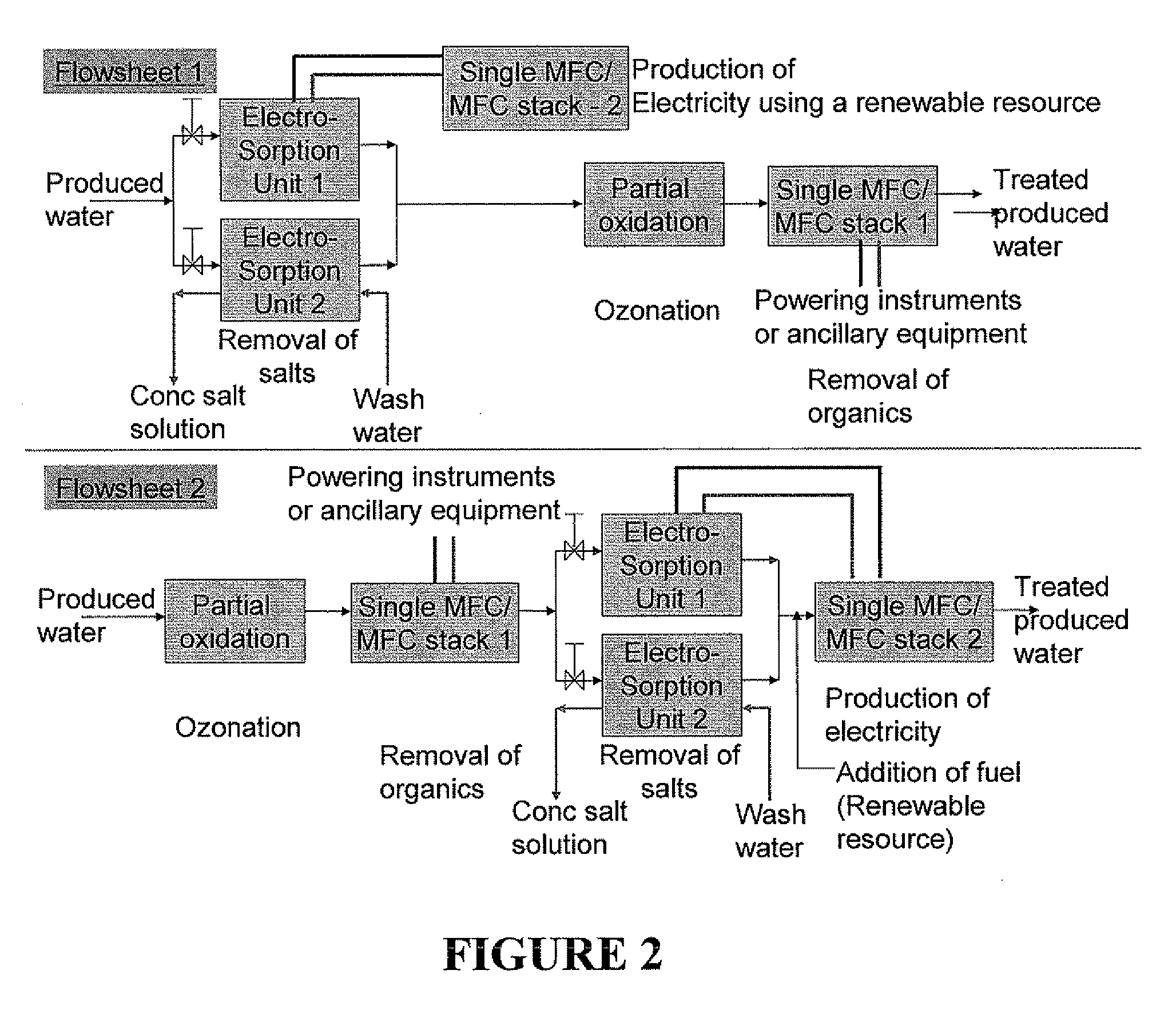Microbial fuel cell treatment of fuel process wastewater
- Summary
- Abstract
- Description
- Claims
- Application Information
AI Technical Summary
Benefits of technology
Problems solved by technology
Method used
Image
Examples
Embodiment Construction
[0016]In one aspect, the invention is directed to a method for cleansing fuel processing water (i.e., “fuel processing wastewater” or “effluent” or “wastewater”) by use of a microbial fuel cell (MFC) in electrical communication with an electrosorption device. More specifically, a dual cleansing mechanism is achieved by the consumption (i.e., oxidative catabolism, breakdown, or degradation) of the carbonaceous component of the effluent by microbes housed in the anode portion of the MFC and the removal of inorganic salts by the electrosorption unit which receives electrical energy from the MFC in order to function. The MFC produces electrical energy by the oxidative breakdown of carbonaceous compounds or materials by microbes in the MFC.
[0017]By “cleansing” of the effluent is meant that the concentration (i.e., level) of carbonaceous compounds and inorganic salts is reduced to a level such that the wastewater can be discharged into the environment or re-used (e.g., recycled) for the s...
PUM
| Property | Measurement | Unit |
|---|---|---|
| Power | aaaaa | aaaaa |
| Concentration | aaaaa | aaaaa |
| Permeability | aaaaa | aaaaa |
Abstract
Description
Claims
Application Information
 Login to View More
Login to View More - R&D
- Intellectual Property
- Life Sciences
- Materials
- Tech Scout
- Unparalleled Data Quality
- Higher Quality Content
- 60% Fewer Hallucinations
Browse by: Latest US Patents, China's latest patents, Technical Efficacy Thesaurus, Application Domain, Technology Topic, Popular Technical Reports.
© 2025 PatSnap. All rights reserved.Legal|Privacy policy|Modern Slavery Act Transparency Statement|Sitemap|About US| Contact US: help@patsnap.com



